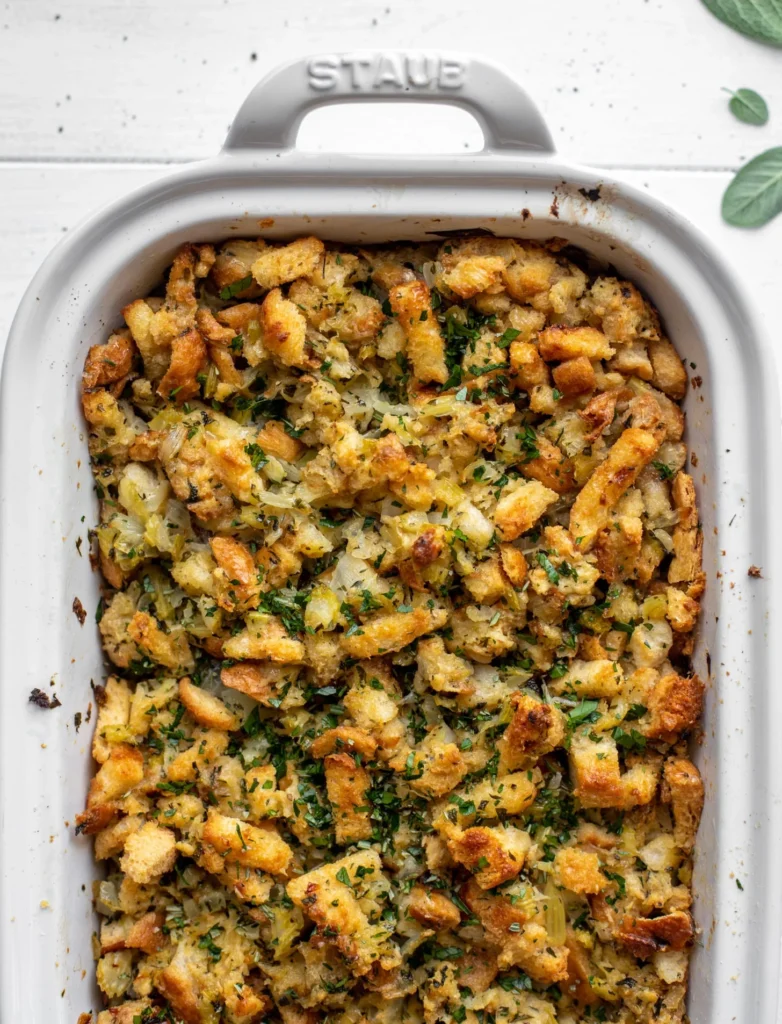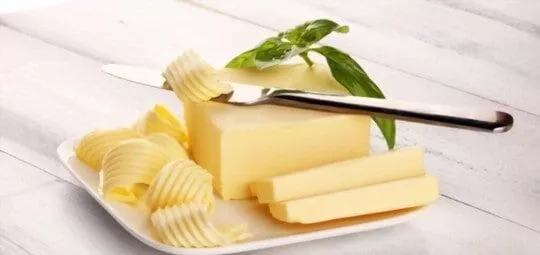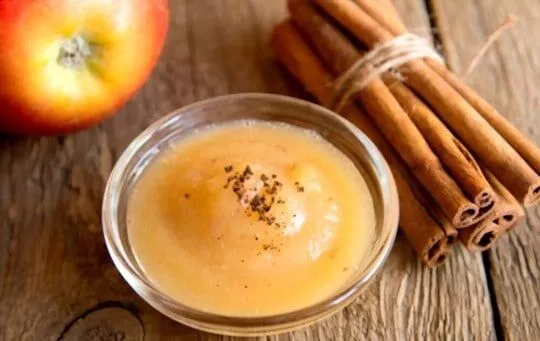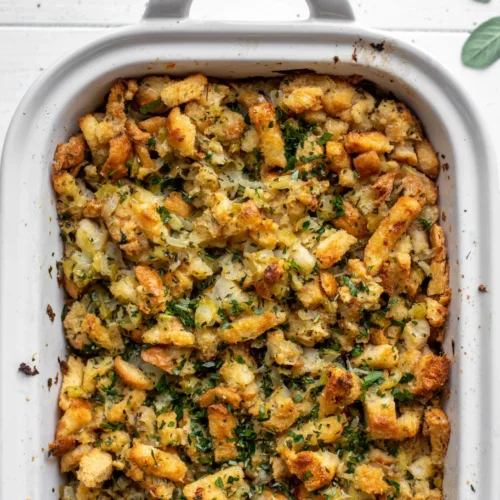Butter is an essential ingredient in most stuffing recipes, providing a rich, velvety texture and mouthwatering flavor that elevates any holiday meal.
However, with an ever-increasing number of dietary restrictions and health preferences, it’s important to find suitable alternatives that can still deliver the same delicious results.
What are the best substitutes for butter in stuffing? The best substitutes for butter in stuffing include olive oil, coconut oil, ghee, margarine, and even applesauce or mashed avocado for a healthier twist. These alternatives will ensure that your stuffing remains moist, flavorful, and satisfying—without the need for traditional butter.
Stick around to learn more about each substitute, and discover which one will work best for your needs and taste buds!
Read Also: The 10 Best Onions for Stuffing
Why Use Butter in Stuffing?

Butter is a common ingredient in stuffing recipes because it adds flavor and richness to the dish.
When melted, it can help to bind the ingredients together, creating a cohesive stuffing mixture.
Additionally, the fat in butter can help to keep the stuffing moist during cooking, preventing it from drying out.
Here is a table that summarizes some of the reasons why butter is used in stuffing:
Overall, butter is a versatile ingredient that can add a lot of flavor and texture to stuffing recipes.
However, it is important to use it in moderation, as too much can make the stuffing greasy and heavy.
The 5 Best Substitutes for Butter in Stuffing
Stuffing is a delicious holiday side dish but using butter to make it can be unhealthy.
Here are five fantastic substitutes that can help you create an equally tasty stuffing without the use of butter:
1. Olive Oil

Olive oil is a versatile and healthy alternative to butter when preparing stuffing for your next holiday meal.
This heart-healthy oil is rich in monounsaturated fats and antioxidants, making it a great addition to various dishes.
Its mild, fruity flavor complements the savory ingredients typically found in stuffing, such as onions, celery, and herbs.
To substitute butter with olive oil in your stuffing recipe, simply use the same amount of olive oil as the required butter.
For example, if a recipe calls for 4 tablespoons of butter, replace it with 4 tablespoons of olive oil.
This allows for similar moisture and texture without compromising on taste.
Olive oil also has a higher smoke point than butter, making it a better option for recipes that require high-heat cooking.
2. Coconut Oil

Coconut oil is another excellent substitute for butter in stuffing recipes.
Its slightly sweet and nutty flavor adds a unique twist to traditional stuffing, while its solid consistency at room temperature provides a similar texture to that of butter.
Coconut oil contains medium-chain triglycerides (MCTs), which are believed to provide health benefits such as improved brain function and increased energy levels.
To use coconut oil in your stuffing, simply replace the butter with an equal amount of coconut oil.
Keep in mind that the distinct taste of coconut oil may be more pronounced in your final dish, so consider this when choosing your ingredients.
For those who enjoy the tropical flavor, coconut oil can be a delicious and health-conscious option.
3. Ghee

Ghee, also known as clarified butter, is a popular choice for those looking to replace butter in their stuffing recipes.
Originating from India, ghee is made by simmering butter until the milk solids separate and are then removed.
This process leaves behind a rich, golden liquid with a slightly nutty aroma.
Ghee has a higher smoke point than butter, making it suitable for high-heat cooking.
In addition, it contains less lactose and casein, which can be beneficial for those with dairy sensitivities.
To use ghee in your stuffing, substitute the same amount of ghee as you would butter.
The flavors of ghee will seamlessly blend with the other ingredients, enhancing the overall taste of your stuffing while providing some potential health benefits.
4. Margarine

Margarine is a popular alternative to butter, as it is made from vegetable oils and closely resembles the taste and texture of butter.
It originated as a less expensive option and has since become a staple in many households.
Margarine is available in various consistencies, including spreadable, stick, and tub.
When choosing a margarine for stuffing, it’s essential to select one that is suitable for cooking and baking.
Look for a product with a higher fat content, ideally around 80%, to ensure the stuffing has a rich, buttery flavor and texture.
When using margarine as a substitute for butter in stuffing, use a 1:1 ratio.
Keep in mind that margarine may contain trace amounts of dairy, so for those with dietary restrictions or allergies, it’s crucial to read the label carefully.
5. Applesauce or mashed avocado

Applesauce and mashed avocado may not be the first ingredients that come to mind when thinking of butter substitutes, but they can be effective alternatives for those seeking a healthier, plant-based option.
Applesauce adds moisture and natural sweetness to the stuffing without significantly altering the flavor.
It’s essential to use unsweetened applesauce to avoid making the stuffing overly sweet.
Mashed avocado provides a creamy texture and rich flavor while also adding beneficial nutrients, such as healthy fats and fiber.
When using applesauce or mashed avocado as a substitute for butter in stuffing, start with a 1:1 ratio, then adjust as needed based on the texture and consistency
Keep in mind that these options may yield a slightly different flavor than traditional butter stuffing, but they offer a unique, delicious twist on a classic dish.
Frequently Asked Questions (FAQs)
What can you substitute butter for in stuffing?
Butter can be substituted with a variety of ingredients in stuffing, including olive oil, coconut oil, vegetable oil, or even chicken or vegetable broth.
Can you substitute olive oil for butter in stuffing?
Yes, olive oil can be used as a substitute for butter in stuffing. It has a rich, savory flavor that complements the other ingredients in stuffing well, and it is also a healthier option than butter.
Why does stuffing need butter?
Stuffing does not necessarily need butter, but it is a common ingredient used to add flavor, moisture, and help bind the ingredients together.
How much oil do I substitute for butter in stuffing?
The amount of oil needed to substitute for butter in stuffing can vary depending on the recipe, but in general, you can use a 1:1 ratio. For example, if the recipe calls for 1/2 cup of butter, you can use 1/2 cup of olive oil instead.
Conclusion
In conclusion, there are many great substitutes for butter when making stuffing.
Whether you are looking for a healthier option, a vegan alternative, or just want to switch things up, there are plenty of ingredients that can provide the same rich, savory flavor and moisture that butter does.
Some of the best alternatives to butter in stuffing include olive oil, coconut oil, vegetable oil, chicken or vegetable broth, and even mashed avocado.
Each of these ingredients can be used in a 1:1 ratio to replace butter in your favorite stuffing recipes, so you can enjoy all the delicious flavors and textures of this classic dish without any of the guilt.

The 5 Best Substitutes for Butter in Stuffing
Ingredients
- Olive Oil
- Coconut Oil
- Ghee
- Margarine
- Applesauce or mashed avocado
Instructions
- Pick your favorite substitute from the list above.
- Follow cooking directions for your selected substitute with the proper ratio of ingredients.
Jenny has always been passionate about cooking, and she uses her platform to share her joy of food with others. Her recipes are easy to follow, and she loves giving tips and tricks to help others create their own unique culinary creations.

